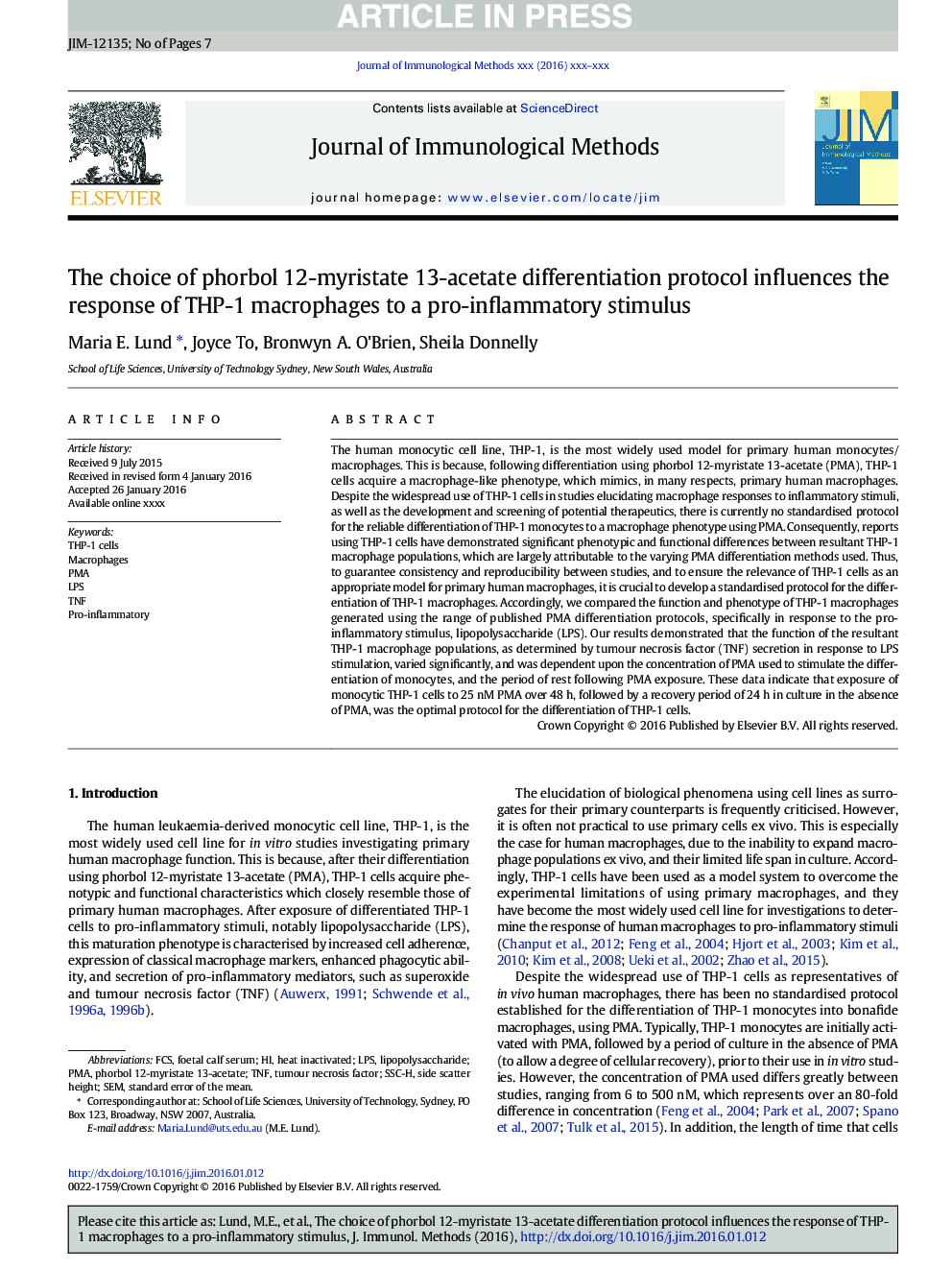| کد مقاله | کد نشریه | سال انتشار | مقاله انگلیسی | نسخه تمام متن |
|---|---|---|---|---|
| 8417292 | 1545679 | 2016 | 7 صفحه PDF | دانلود رایگان |
عنوان انگلیسی مقاله ISI
The choice of phorbol 12-myristate 13-acetate differentiation protocol influences the response of THP-1 macrophages to a pro-inflammatory stimulus
دانلود مقاله + سفارش ترجمه
دانلود مقاله ISI انگلیسی
رایگان برای ایرانیان
کلمات کلیدی
LPSFCSphorbol 12-myristate 13-acetateTNFPMA - LDC هاstandard error of the mean - خطای استاندارد میانگینfoetal calf serum - سرم گوساله جنینTHP-1 cells - سلول های THP-1Pro-inflammatory - طرفدار التهابtumour necrosis factor - عامل نکروز تومورlipopolysaccharide - لیپوپلی ساکاریدMacrophages - ماکروفاژها،درشت خوارهاSEM - مدل معادلات ساختاری / میکروسکوپ الکترونی روبشیheat inactivated - گرما غیرفعال شده است
موضوعات مرتبط
علوم زیستی و بیوفناوری
بیوشیمی، ژنتیک و زیست شناسی مولکولی
بیوتکنولوژی یا زیستفناوری
پیش نمایش صفحه اول مقاله

چکیده انگلیسی
The human monocytic cell line, THP-1, is the most widely used model for primary human monocytes/macrophages. This is because, following differentiation using phorbol 12-myristate 13-acetate (PMA), THP-1 cells acquire a macrophage-like phenotype, which mimics, in many respects, primary human macrophages. Despite the widespread use of THP-1 cells in studies elucidating macrophage responses to inflammatory stimuli, as well as the development and screening of potential therapeutics, there is currently no standardised protocol for the reliable differentiation of THP-1 monocytes to a macrophage phenotype using PMA. Consequently, reports using THP-1 cells have demonstrated significant phenotypic and functional differences between resultant THP-1 macrophage populations, which are largely attributable to the varying PMA differentiation methods used. Thus, to guarantee consistency and reproducibility between studies, and to ensure the relevance of THP-1 cells as an appropriate model for primary human macrophages, it is crucial to develop a standardised protocol for the differentiation of THP-1 macrophages. Accordingly, we compared the function and phenotype of THP-1 macrophages generated using the range of published PMA differentiation protocols, specifically in response to the pro-inflammatory stimulus, lipopolysaccharide (LPS). Our results demonstrated that the function of the resultant THP-1 macrophage populations, as determined by tumour necrosis factor (TNF) secretion in response to LPS stimulation, varied significantly, and was dependent upon the concentration of PMA used to stimulate the differentiation of monocytes, and the period of rest following PMA exposure. These data indicate that exposure of monocytic THP-1 cells to 25Â nM PMA over 48Â h, followed by a recovery period of 24Â h in culture in the absence of PMA, was the optimal protocol for the differentiation of THP-1 cells.
ناشر
Database: Elsevier - ScienceDirect (ساینس دایرکت)
Journal: Journal of Immunological Methods - Volume 430, March 2016, Pages 64-70
Journal: Journal of Immunological Methods - Volume 430, March 2016, Pages 64-70
نویسندگان
Maria E. Lund, Joyce To, Bronwyn A. O'Brien, Sheila Donnelly,